Juglans species
Description: Walnuts grow on very large trees, often reaching 18 meters tall. The divided leaves characterize all walnut spades. The walnut itself has a thick outer husk that must be removed to reach the hard inner shell of the nut.
Habitat and Distribution: The English walnut, in the wild state, is found from southeastern Europe across Asia to China and is abundant in the Himalayas. Several other species of walnut are found in China and Japan. The black walnut is common in the eastern United States.
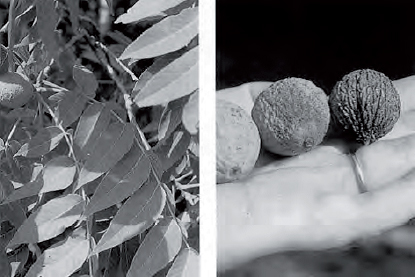
Edible Parts: The nut kernel ripens in the autumn. You get the walnut meat by cracking the shell. Walnut meats are highly nutritious because of their protein and oil content.
Other Uses: You can boil walnuts and use the juice as an antifungal agent. The husks of “green” walnuts produce a dark brown dye for clothing or camouflage. Crush the husks of “green” black walnuts and sprinkle them into sluggish water or ponds for use as fish poison.
Water chestnut
Trapa natans
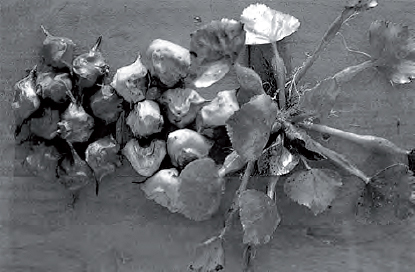
Description: The water chestnut is an aquatic plant that roots in the mud and has finely divided leaves that grow underwater. Its floating leaves are much larger and coarsely toothed. The fruits, borne underwater, have four sharp spines on them. Habitat and
Distribution: The water chestnut is a freshwater plant only. It is a native of Asia but has spread to many parts of the world in both temperate and tropical areas.
Edible Parts: The fruits are edible raw and cooked. The seeds are also a source of food.
Water lettuce
Ceratopteris species

Description: The leaves of water lettuce are much like lettuce and are very tender and succulent. One of the easiest ways of distinguishing water lettuce is by the little plantlets that grow from the margins of the leaves. These little plantlets grow in the shape of a rosette. Water lettuce plants often cover large areas in the regions where they are found.
Habitat and Distribution: Found in the tropics throughout the Old World in both Africa and Asia. Another kind is found in the New World tropics from Florida to South America. Water lettuce grows only in very wet places and often as a floating water plant. Look for water lettuce in still lakes, ponds, and the backwaters of rivers.
Edible Parts: Eat the fresh leaves like lettuce. Be careful not to dip the leaves in the contaminated water in which they are growing. Eat only the leaves that are well out of the water.
This plant has carcinogenic properties and should only be used as a last resort.
Water lily
Nymphaea odorata
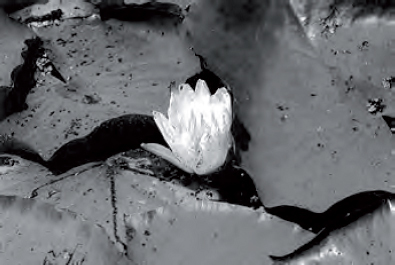
Description: These plants have large, triangular leaves that float on the water’s surface, large, fragrant flowers that are usually white, or red, and thick, fleshy rhizomes that grow in the mud.
Habitat and Distribution: Water lilies are found throughout much of the temperate and subtropical regions.
Edible Parts: The flowers, seeds, and rhizomes are edible raw or cooked. To prepare rhizomes for eating, peel off the corky rind. Eat raw, or slice thinly, allow to dry, and then grind into flour. Dry, parch, and grind the seeds into flour.
Other Uses: Use the liquid resulting from boiling the thickened root in water as a medicine for diarrhea and as a gargle for sore throats.
Water plantain
Alisma plantago-aquatica
Description: This plant has small, white flowers and heart-shaped leaves with pointed tips. The leaves are clustered at the base of the plant.
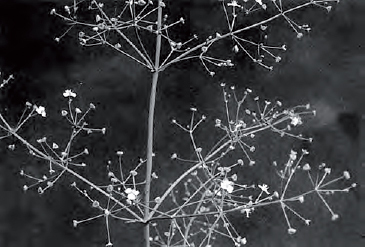
Habitat and Distribution: Look for this plant in fresh water and in wet, full sun areas in Temperate and Tropical Zones.
Edible Parts: The rootstocks are a good source of starch. Boil or soak them in water to remove the bitter taste.
To avoid parasites, always cook aquatic plants.
Wild caper
Capparis aphylla
Description: This is a thorny shrub that loses its leaves during the dry season. Its stems are gray-green and its flowers pink.
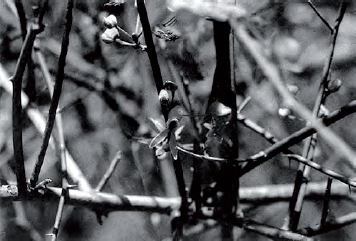
Habitat and Distribution: These shrubs form large stands in scrub and thorn forests and in desert scrub and waste. They are common throughout North Africa and the Middle East.
Edible Parts: The fruit and the buds of young shoots are edible raw.
Wild crab apple or wild apple
Malus species
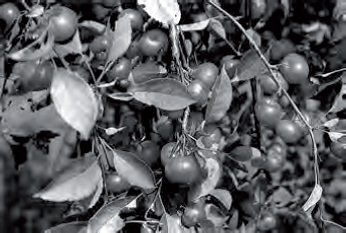
Description: Most wild apples look enough like domestic apples that the survivor can easily recognize them. Wild apple varieties are much smaller than cultivated kinds; the largest kinds usually do not exceed 5 to 7.5 centimeters in diameter, and most often less. They have small, alternate, simple leaves and often have thorns. Their flowers are white or pink and their fruits reddish or yellowish.
Habitat and Distribution: They are found in the savanna regions of the tropics. In temperate areas, wild apple varieties are found mainly in forested areas. Most frequently, they are found on the edge of woods or in fields. They are found throughout the Northern Hemisphere.
Edible Parts: Prepare wild apples for eating in the same manner as cultivated kinds. Eat them fresh, when ripe, or cooked. Should you need to store food, cut the apples into thin slices and dry them. They are a good source of vitamins.
Apple seeds contain cyanide compounds. Do not eat.
Wild desert gourd or colocynth
Citrullus colocynthis

Description: The wild desert gourd, a member of the watermelon family, produces an 2.4- to 3-meter-long ground-trailing vine. The perfectly round gourds are as large as an orange. They are yellow when ripe.
Habitat and Distribution: This creeping plant can be found in any climatic zone, generally in desert scrub and waste areas. It grows abundantly in the Sahara, in many Arab countries, on the southeastern coast of India, and on some of the islands of the Aegean Sea. The wild desert gourd will grow in the hottest localities.
Edible Parts: The seeds inside the ripe gourd are edible after they are completely separated from the very bitter pulp. Roast or boil the seeds – their kernels are rich in oil. The flowers are edible. The succulent stem tips can be chewed to obtain water.
Wild dock and wild sorrel
Rumex crispus and Rumex acetosella
Description: Wild dock is a stout plant with most of its leaves at the base of its stem that is commonly 15 to 30 centimeters brig. The plants usually develop from a strong, fleshy, carrotlike taproot. Its flowers are usually very small, growing in green to purplish plumelike clusters. Wild sorrel is similar to the wild dock but smaller. Many of the basal leaves are arrow-shaped but smaller than those of the dock and contain a sour juice.